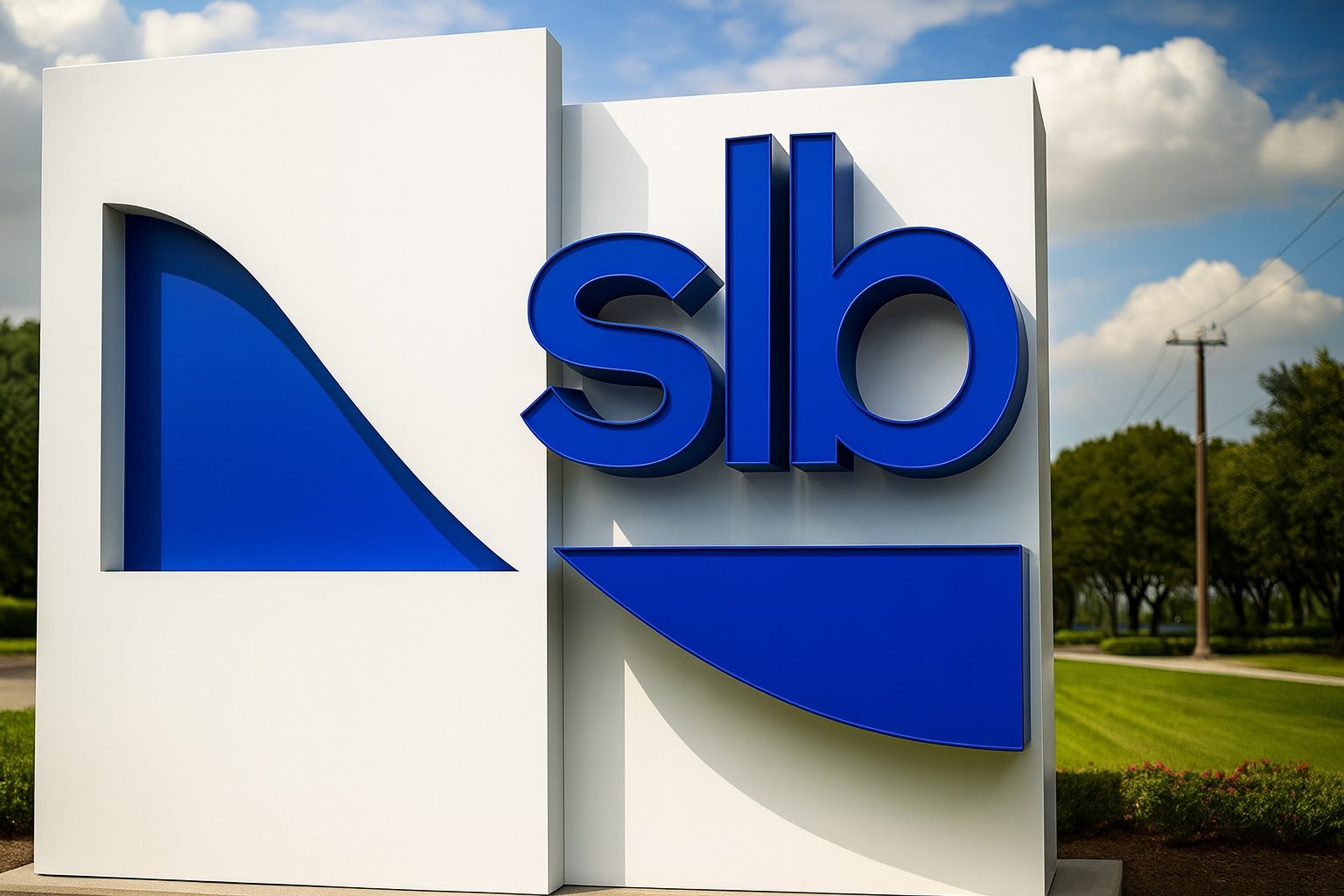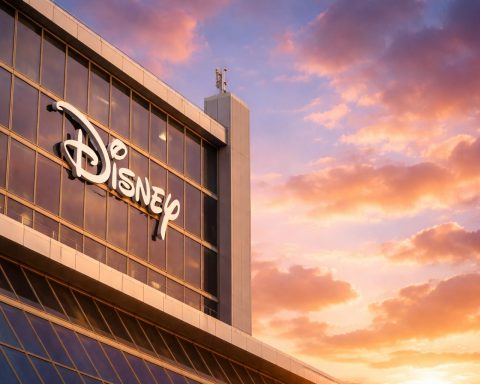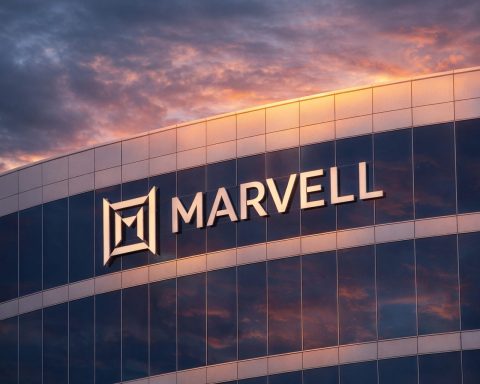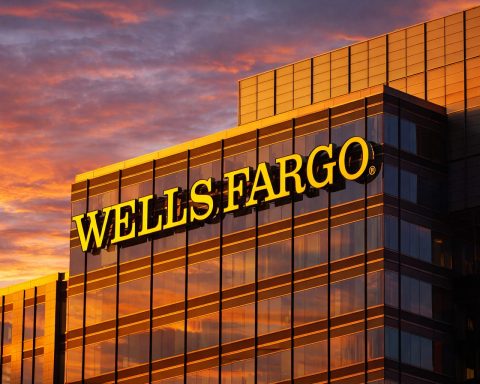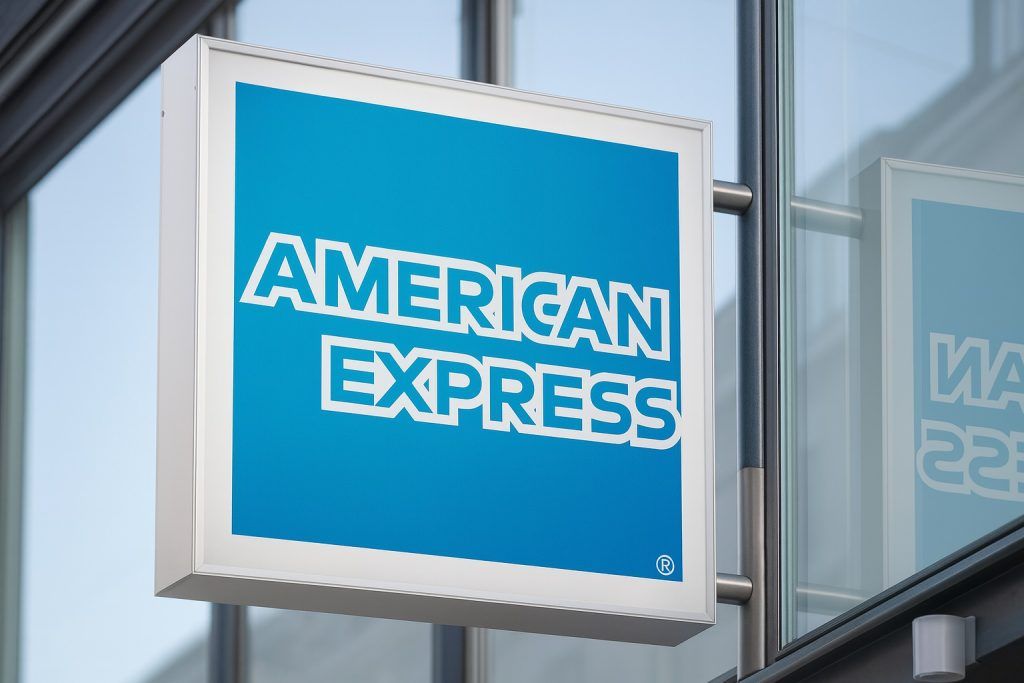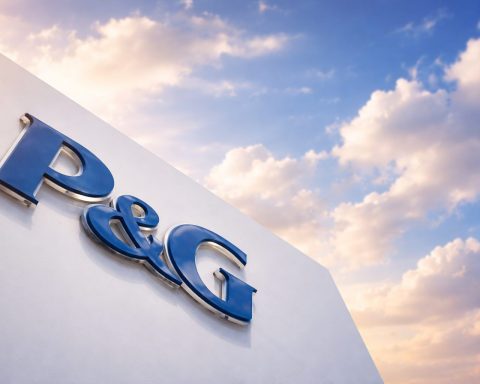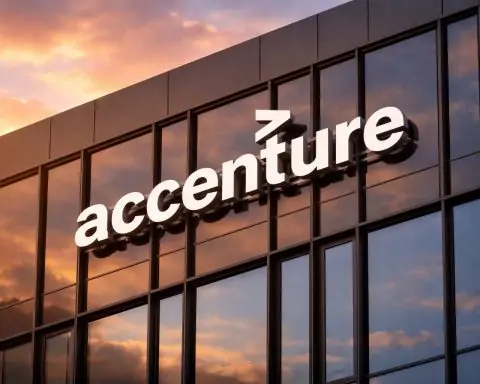- Latest Price & Performance: SLB N.V. (formerly Schlumberger) stock trades around $33 as of Oct 17, 2025, down roughly 9–12% year-to-date and about 20–26% lower than a year ago [1] [2]. Shares rose 1% on Oct 16 to $32.92 [3], but slipped after Q3 earnings despite an estimate beat. SLB’s 52-week range is ~$31 to $45 [4], underperforming oilfield peers (Baker Hughes +12% YTD; Halliburton –16% YTD) [5] amid oil price volatility.
- Q3 2025 Earnings Beat: SLB beat Wall Street’s Q3 forecasts, posting EPS of $0.69 (vs $0.66 expected) and revenue of $8.93 B (vs $8.92 B est.) [6] [7]. However, results marked a ~3% YoY revenue decline as international activity softened. Adjusted EPS fell 22% YoY from $0.89 [8]. Still, CEO Olivier Le Peuch called the quarter “resilient,” noting North America demand stabilized and a recent acquisition boosted results [9] [10].
- ChampionX Acquisition & $4B Payouts: In July, SLB completed a $7.7 B merger with ChampionX, expanding its production chemicals and artificial lift business [11] [12]. The deal added ~$595 M to Q3 revenue [13] and is expected to yield $400 M in synergies within 3 years [14]. SLB’s Board pledged to return at least $4 B to shareholders in 2025 via dividends and buybacks [15]. The stock offers a ~3.5% dividend yield and SLB has increased its dividend five years running [16], highlighting robust cash flows (Q3 free cash flow was $1.8 B).
- Oil Market Headwinds: Oil prices have slid – Brent ~$61 and WTI ~$57 as of Oct 17 [17] – amid oversupply forecasts. CNBC’s Jim Cramer cautioned that even best-of-breed SLB hasn’t “gone up along with oil prices” and could face pressure if crude falls below $60 [18]. Indeed, SLB’s international revenue fell 7% YoY in Q3 as global CapEx stayed cautious [19] [20]. Management expects an eventual rebound overseas once supply/demand rebalances, citing ongoing deepwater and gas projects and oil capacity expansion plans [21].
- Analyst Consensus & Forecasts: Wall Street remains bullish on SLB. 15 of 17 analysts rate it a Buy (no sells) [22]. The average 12-mo price target is ~$47–52, implying ~44–58% upside [23] [24]. Some targets run as high as $82 [25]. Analysts see earnings growing ~6% in 2026 (to ~$3.58 EPS) [26]. Notably, UBS recently reiterated a Buy but trimmed its target to $44 (from $45) ahead of earnings [27], reflecting near-term caution. Overall SLB’s valuation looks attractive – it trades around 11× forward earnings, well below the industry average ~17× [28], and at ~2.1× book value [29]. Morningstar notes SLB should benefit from a “$100 B per year project pipeline in 2025–26”, especially in offshore developments [30].
- Competitive Position: SLB is the world’s largest oilfield services provider (market cap ~$49 B) [31], ahead of Baker Hughes (~$44 B) and Halliburton (~$18 B). Baker Hughes’ stock hit an all-time high ~$50 in late Sept [32] on strong LNG and energy tech orders, and remains up on the year [33]. Halliburton, heavily tied to U.S. shale drilling, has lagged with shares near multi-year lows [34]. By contrast, SLB’s strength is its global reach (80% int’l revenue) [35] and diversified tech portfolio. Its digital solutions and new energy ventures provide resilience even in a flat oil capex environment [36] [37]. For instance, SLB’s digital division grew revenue +4% sequentially in Q3 with 35.5% margins [38], and the company has maintained dividends for 54 years straight [39] [40] – underlining a shareholder-friendly profile.
- Technology & Growth Initiatives: SLB is pivoting to position itself as an “energy technology” leader. In July 2025, it partnered with edge-computing startup Zededa to deploy AI at the rugged oilfield edge, integrating Zededa’s cloud-native software into SLB’s Agora platform for real-time analytics at remote well sites [41] [42]. “SLB is committed to digital transformation…empowering the energy sector with advanced data insights,” said Zededa’s CEO of the deal [43]. SLB is also innovating in cleaner energy: its OneSubsea unit (a JV with Aker Solutions) won a landmark Equinor contract to deliver the industry’s first large-scale all-electric subsea production system for Norway’s Fram Sør project [44]. The system will use 12 all-electric subsea trees, eliminating hydraulic fluid and significantly cutting emissions and costs [45]. Such moves into digital, AI, and low-carbon tech complement SLB’s core oilfield services, potentially opening new revenue streams.
Q3 Earnings Recap: Resilient Results Amid Oil Slowdown
SLB’s third-quarter 2025 results, released on Oct 17, showed better-than-expected profitability even as industry conditions softened. The company earned $0.69 per share (adj.) for Q3, topping estimates of $0.66 [46]. Revenue came in at $8.93 billion, essentially on target [47]. Both metrics were down modestly from a year ago (EPS was $0.89, revenue $9.16 B in Q3 2024) as global drilling activity has cooled. CEO Olivier Le Peuch described the quarter as “resilient,” noting SLB expanded its EBITDA margins and generated $1.8 B in free cash flow, thanks to efficiency gains [48] [49]. North America proved a bright spot – revenue there rose +14% YoY to $1.93 B as the U.S. rig count stabilized [50] [51]. International revenue (~80% of total) fell 7% YoY to $6.92 B amid lower spending in regions like Latin America and Europe [52]. Le Peuch noted that high oil inventories and geopolitical uncertainties made overseas customers cautious on short-cycle projects [53] [54].
A big Q3 storyline was SLB’s recent acquisition of ChampionX – a deal which closed July 16 and added two months of ChampionX results into the quarter [55]. ChampionX is a leader in oilfield chemicals, pumps, and artificial lift; folding it in bolstered SLB’s Production Systems division. SLB said Q3 revenue would have been down ~9% YoY without the acquisition [56] [57]. With it, the top line was only ~3% lower, indicating ChampionX provided a meaningful revenue boost. Management highlighted that the merger expands SLB’s presence in the “production and recovery” market, which is less cyclical than drilling [58] [59]. The combined company can now offer oil producers integrated solutions – from subsurface (SLB’s traditional forte) through production chemistry and flow equipment – potentially unlocking cross-selling opportunities.
SLB also reaffirmed its commitment to shareholder returns. The company approved a $0.285 quarterly dividend (about 3.5% annual yield) and has been aggressively buying back stock [60]. In fact, SLB announced it remains on track to return at least $4 billion to investors in 2025 via dividends and share repurchases [61]. By mid-year, it had already completed a major accelerated buyback (over $2.3 B repurchased) [62]. This reflects confidence in cash flow despite 2025’s challenges. SLB’s capital discipline has improved since the last industry downturn – capex remains moderate (~5% of revenue) and net debt/EBITDA is comfortable around 1.5×, giving room to keep funding payouts.
Looking ahead, SLB struck a cautiously optimistic tone. CEO Le Peuch noted that while near-term conditions are mixed, signs point to an international activity rebound once the oil market rebalances. “Looking ahead, it is more likely that the international markets will lead an activity rebound when supply and demand rebalance,” Le Peuch said, citing “sustained investment for oil capacity, gas expansion projects and a constructive outlook for deepwater” as drivers [63]. He added that “SLB is well positioned to benefit from such a recovery.” In the immediate next quarter (Q4), SLB expects a modest uptick in revenue “driven by the international markets, Digital, and a full quarter of activity from the acquired ChampionX businesses.” [64]. In other words, Q4 2025 should see a sequential growth lift as overseas projects (e.g. offshore developments, Middle East capacity expansions) ramp up and the ChampionX segment contributes a full quarter.
Notably, SLB’s Digital & Integration division continues to shine. In Q3, digital revenues hit a record $1.1 B (up +4% sequentially) with hefty 35% margins [65]. This segment – which includes software, cloud, and data services for optimizing drilling and production – is less tied to oil price swings and grew at “high teens” rates in 2025 [66] [67]. SLB’s ability to diversify into higher-tech offerings has provided a buffer against pure drilling downturns. For example, SLB noted strong uptake of its AI-driven *Agora platform and new digital partnerships (more on that below), which helped many clients boost efficiency and lower costs even as commodity prices dipped. This digital momentum, plus the added ChampionX product lines, gives SLB multiple levers for growth beyond just rig count increases.
Recent Developments: Oil Market Slump, Tech Initiatives, and M&A
The backdrop for SLB’s recent performance is a cooling oil market. After surging earlier in 2025, crude prices pulled back sharply by October. Brent crude fell under $61 and U.S. WTI under $58 per barrel during the week of SLB’s earnings [68] – on track for a ~3% weekly loss amid forecasts of an oversupply “glut” in 2024. The International Energy Agency (IEA) warned of weakening demand and robust non-OPEC supply, pressuring prices [69]. This downturn has weighed on oil-sensitive stocks like SLB. On Oct 17, CNBC’s Jim Cramer commented on Mad Money that SLB is the “best-of-breed” in oil services yet its stock has struggled to rally given oil’s retreat [70]. He noted SLB’s share price did not climb alongside oil’s mid-year rise, and cautioned that if crude dips below $60, even quality names could face further selling [71]. (In fact, oil did breach the $60 threshold, underscoring that risk.) This sentiment captures investors’ recent skittishness: macro headwinds have overshadowed SLB’s solid execution.
Despite near-term pessimism, industry experts still see long-term tailwinds. For instance, Morningstar analysts argue that national oil companies are sanctioning a wave of large projects – “a sanctioned project pipeline of ~$100 billion per year during 2025–26” – especially offshore, which should benefit SLB as the top global contractor [72]. Many OPEC+ nations and majors like Petrobras, Saudi Aramco, and offshore-focused E&Ps are expected to boost spending on complex developments (deepwater fields, LNG, gas infrastructure) in order to meet medium-term demand and energy security needs. SLB’s unparalleled international footprint (operating in 100+ countries) uniquely positions it to win a chunk of this work. Notably, Baker Hughes and Halliburton have more North America exposure, whereas SLB dominates in Middle East, Latin America, and offshore Europe/Asia projects, which stand to grow. This may explain why analysts forecast SLB’s earnings to resume growth in 2024–26 even under flat oil scenarios [73].
On the technology front, SLB has actively diversified into digital solutions and cleaner energy tech – moves that could pay off as the industry evolves. In late July, SLB announced a collaboration with Zededa, a Silicon Valley edge-computing startup, to bring artificial intelligence to remote oilfield operations [74]. The partnership will integrate Zededa’s edge management software into SLB’s “Agora” IoT platform, enabling real-time analytics and machine learning at well sites with poor connectivity [75] [76]. This allows drilling rigs and production facilities in remote regions to run AI models on-site (for safety monitoring, predictive maintenance, etc.) without relying on constant cloud connectivity [77]. “We’re excited to develop AI-driven solutions that empower the global energy sector with advanced data insights,” Zededa’s CEO said of the deal [78]. Such tech tie-ups underscore SLB’s strategy to reinvent itself as a high-tech service provider (“energy technology company”) rather than a plain rig contractor. The company has also launched several in-house digital offerings – from AI-powered drilling advisors to cloud-based reservoir simulation – which it showcased to over 1,000 customers at its Digital Forum in September [79] [80]. These efforts help clients lower costs, reduce carbon footprint, and improve efficiency, reinforcing SLB’s value proposition even in a subdued oil price environment.
SLB is similarly investing in the energy transition and lower-carbon solutions. A standout example is the OneSubsea all-electric subsea system project for Equinor’s Fram Sør field. Announced in August, this is the first large-scale all-electric subsea production system in the industry [81]. OneSubsea (a JV 70% owned by SLB) will deliver an underwater production network featuring 4 subsea templates and 12 all-electric “trees” – the valve assemblies that control oil flow – without any hydraulic fluid [82]. Traditional subsea systems rely on hydraulics and umbilical lines from the platform, but this new design uses fully electric actuators and digital controls, “eliminating the need for hydraulic fluid” and bulky topside equipment [83]. The result: a “cost-effective and low-emission tieback solution” for Equinor’s reservoir [84]. By cutting out hydraulic infrastructure, it saves platform space and avoids potential leaks, making it more environmentally friendly. SLB’s CEO of OneSubsea hailed it as a “breakthrough” that will enable development of resources once deemed uneconomical due to high emissions or costs [85] [86]. The Fram Sør project, tying back to the Troll C platform (itself powered by Norwegian hydroelectric grid, further lowering emissions), is set to start production later in the decade. This win not only adds to SLB’s backlog but also demonstrates its ability to deliver cutting-edge engineering for the energy transition. It aligns with SLB’s broader New Energy initiatives (in areas like carbon capture, geothermal, and lithium extraction) and its pledge to help clients decarbonize oil & gas operations.
On the M&A front, the marquee story is clearly the ChampionX acquisition. Valued at ~$7.8 B (in stock, with ChampionX shareholders getting ~0.735 SLB shares each) [87], this deal was essentially a merger that closed in Q3 after regulatory approvals [88]. It brings in a complementary suite of production optimization technologies – from specialty chemicals that enhance oil recovery to pumps and artificial lift systems that help bring hydrocarbons to the surface. These offerings nicely complement SLB’s core strengths in drilling and subsurface evaluation. SLB highlighted that ChampionX’s strong North America presence and customer relationships will bolster SLB’s position in the U.S. market, while SLB’s global reach can help sell ChampionX solutions internationally [89] [90]. Importantly, production-related services tend to be “less cyclical” – oil producers need chemicals and lift equipment to keep existing wells flowing even when new drilling slows, providing a steadier revenue stream through downturns. This could help smooth out SLB’s volatile earnings. The company expects $400 M in annual pre-tax synergy within 3 years [91], via cost cuts and cross-selling. Already by Q3, integration seems on track: SLB noted incremental Digital and Production Systems revenue from acquired businesses [92] and no major hiccups. The combined firm also initiated an accelerated share repurchase earlier in the year (perhaps taking advantage of SLB’s dip to buy back shares and offset dilution from the stock deal) [93]. Overall, Wall Street has viewed the merger positively, as it transforms SLB into a more diversified one-stop shop for oilfield solutions. Some analysts even suggest the “sum-of-parts” valuation of New SLB (core services + ChampionX segment + Digital arm) is higher than SLB’s current market price, bolstering the long-term bull case [94].
Analyst Views and Market Outlook
Despite 2025’s sluggish share performance, analysts remain upbeat that SLB’s fortunes will improve. The consensus rating is a “Strong Buy” to “Moderate Buy”, with dozens of firms covering the stock [95] [96]. Over the past 3 months, SLB garnered at least 12 Buy ratings vs 5–6 Hold ratings and 0 Sells [97]. This bullish tilt reflects SLB’s dominant franchise and the expectation that current headwinds (low oil prices, budget pauses) are temporary. The median price target hovers around $47–$52 – roughly 45–60% above the mid-$30s trading price [98] [99]. For example, TipRanks reports an average target of $47.47 from 17 analysts, implying +44% upside [100], while MarketBeat pegs the consensus at $52.00, or +58% upside [101]. Price targets range widely (low ~$41, high $80+) reflecting different oil price assumptions [102]. Notably, even the low end ~$41 would be ~25% above the current stock price – indicating most analysts see SLB as undervalued. Valuation metrics support this: at ~$33, SLB trades at ~11× 2025 earnings (Zacks est.), well under the oilfield services industry average P/E ~17 [103]. Its EV/EBITDA ~8× and PEG ratio ~1.6 (based on modest growth forecasts) also suggest a reasonable or cheap stock [104] [105]. Morningstar’s model estimates a fair value around $44–$46, and even labels SLB about 28% undervalued at recent prices [106] [107]. The dividend yield of 3.5% adds to total return potential, and with a payout ratio under 40%, it appears safe [108] [109].
In research notes, analysts acknowledge near-term risks but emphasize SLB’s strong positioning for an eventual upcycle. UBS’s energy team, for instance, maintained their Buy rating in August but nudged the price target from $45 down to $44 amid lower near-term earnings forecasts [110]. They cited the timing of international recovery as uncertain but highlighted SLB’s robust free cash flow and commitment to buybacks as support for the stock [111]. Goldman Sachs (which has SLB on its Conviction List) points to SLB’s leverage to offshore projects and notes that deepwater spending is still slated to grow mid-single-digits in 2025 even if U.S. shale is stagnant – a plus for SLB versus Halliburton. On the flip side, some caution that North American drilling could stay muted if U.S. oil production hits record highs with fewer rigs (thanks to productivity gains) [112]. SLB’s own management warned that U.S. land drilling remains constrained by low natural gas prices and capital discipline by operators [113] [114]. Furthermore, any global recession or prolonged oil glut into 2026 could delay the international spending rebound that SLB is banking on. These factors temper certain analysts’ enthusiasm, explaining the stock’s depressed valuation.
However, the general sentiment leans positive – that SLB’s diversified portfolio and strategic moves will yield results. Bank of America recently noted that SLB’s integration of digital technology (including AI and cloud services) into traditional operations is a “game changer” that could lift margins above prior cycle peaks. They also see SLB’s focus on capital efficiency (e.g. re-using equipment, rationalizing its frac fleet, and asset-light approaches) as enhancing returns on capital, which could warrant a higher P/E than the market currently assigns. Additionally, relative performance versus peers is expected to improve. While SLB lagged Baker Hughes in 2025 (partly due to Baker’s unique LNG equipment boom), some of that divergence may correct. If oil stabilizes or rises, SLB tends to catch up fast given its beta to global activity. And if oil remains weak, SLB’s outsized international exposure might actually shield it somewhat, since many state-owned oil companies continue projects for strategic reasons (e.g. Middle East capacity additions) even when prices are soft. In contrast, a pure-play like Halliburton is more directly tied to volatile shale drilling budgets. This dynamic is reflected in forward P/E ratios: Halliburton now trades around 8× 2025 earnings [115] – cheaper than SLB’s ~11× – but that gap could close if investors gain confidence in SLB’s growth trajectory.
Finally, macro analysts suggest that oil prices may find a floor near current levels, as OPEC+ could intervene to support prices if they dip much further. Any recovery in oil (say back to $70s) would likely act as a catalyst for all oilfield stocks, including SLB. Conversely, if the geopolitical situation (e.g. war risk or supply cuts) pushes oil unexpectedly higher, SLB could rally sharply. The stock’s beta to oil and the overall market remains significant, so volatility should be expected. But with the company’s fundamentals on solid ground – healthy backlog, improving margins, and shareholder returns – many see the current weakness as an opportunity. As Yahoo Finance quipped in a recent piece, “Is the recent share price slump a potential opportunity?” [116] – analysts leaning “yes” think patient investors could be rewarded once the cycle turns.
Peer Comparison: SLB vs. Halliburton vs. Baker Hughes
A comparison with SLB’s main rivals provides context to its prospects. Halliburton (HAL) and Baker Hughes (BKR) are the other two giants in oilfield services. Each has distinct strengths and market focus:
- Halliburton – Focused on drilling and completion services, especially in North America. Halliburton is the leader in U.S. fracking (pressure pumping) and has a large shale patch presence. It’s roughly half SLB’s size by market cap ($18 B vs $49 B) [117] and its stock has been hit harder over the past year (recently ~$22, down from a 52-week high $35 [118]). HAL’s 2025 YTD return was –16% as of mid-October [119], reflecting the steep drop in North American activity earlier this year. However, HAL trades at a lower P/E (~9× trailing, <8× forward) [120] [121] and offers a similar ~3% dividend yield. If U.S. shale spending rebounds (e.g. on higher gas prices or new oil basin development), Halliburton could see a sharper bounce in revenue than SLB, given its dominance in that segment. Notably, Halliburton’s management has also pivoted to international growth, winning more Middle East contracts in 2024–25, but it remains relatively more exposed to the U.S. cycle. In summary, HAL is often seen as a higher-beta, North America-focused alternative to SLB. At present, its underperformance mirrors the headwinds in U.S. drilling and some company-specific challenges (like certain customer bankruptcies). Analysts still rate HAL a Buy on average, but with more caution until U.S. rig counts clearly bottom.
- Baker Hughes – More of a hybrid oilfield and industrial company. BKR has two main divisions: Oilfield Services & Equipment (direct competitor to SLB/HAL in drilling, evaluation, etc.) and Industrial & Energy Technology (makes LNG liquefaction equipment, gas turbines, compressors, and is expanding in hydrogen, carbon capture, etc.). This dual nature helped Baker significantly in 2025. Its stock is up ~12% YTD and hit all-time highs (~$50) in late September [122] [123], buoyed by a rush of LNG project orders and excitement over its clean energy tech potential. Baker’s quarterly results have shown robust equipment backlog growth and improving margins in its turbomachinery segment, which investors have rewarded. By contrast, Baker’s traditional OFS business faced similar pressures as SLB (soft drilling demand), but this was offset by the industrial side. With a ~$44 B market cap, Baker is now close to SLB in size, and some view it as a more diversified play on energy infrastructure. However, BKR’s valuation has expanded accordingly (it trades around 20× earnings, reflecting growth optimism in LNG). In terms of direct competition, SLB still leads in market share for core oilfield services globally, but Baker is catching up in certain areas (it has strong ties in the Middle East too, partially due to its GE legacy). Baker also recently reorganized to give more visibility to its high-growth businesses, a move that unlocked value. For investors comparing the three, SLB offers a middle path – more international and tech-heavy than Halliburton, but more pure-play on oil/gas services than Baker Hughes.
It’s worth noting all three companies have pursued different strategies for the energy transition. SLB rebranded from “Schlumberger” to just “SLB” in 2022, signaling a pivot to a broader energy technology identity [124]. It has initiatives in carbon solutions, geothermal, and even critical minerals (for batteries). Baker Hughes has been investing in climate tech startups and its core competency in turbines lends itself to carbon capture systems and hydrogen. Halliburton, while less publicized in this arena, has a Labs program and some foothold in geothermal services. These efforts could, over the long term, create new revenue streams beyond oil – an important consideration as ESG-minded investors evaluate the industry. SLB arguably has been most aggressive in marketing itself as aligned with a “lower-carbon future,” which might help its stock’s appeal if it can show tangible progress (e.g. SLB’s New Energy division has pilot projects in carbon capture hubs and direct lithium extraction for batteries).
Conclusion
Bottom Line: SLB stock has lagged in 2025, but the company’s fundamentals remain solid and multiple catalysts could drive a turnaround. The recent Q3 earnings beat demonstrated resilience – margins expanded and free cash flow surged even with lower revenue [125] [126]. SLB’s strategic moves, from the ChampionX acquisition to digital technology partnerships, are positioning it for the future of energy services. Management’s commitment to $4 billion in shareholder returns this year [127] underscores confidence in its financial strength. Near-term, the stock faces headwinds from a slumping oil market and investor risk aversion. However, experts note that global energy demand continues to rise, and eventually investment in oil & gas projects must resume to avoid supply shortfalls. SLB, as the industry leader, is poised to capitalize when that cycle turns. Analysts see the stock’s current weakness as an opportunity – with consensus upside of ~50% or more over the next year [128] if SLB executes and macro conditions improve.
There are risks to monitor: a prolonged period of <$60 oil would pressure customer budgets and potentially limit SLB’s growth. Integration of ChampionX must be smooth to deliver promised synergies. Geopolitical flare-ups or recessions could also delay the recovery in international projects. Yet SLB has navigated volatile cycles for decades (the company is nearly 100 years old), and it’s emerged more diversified and technologically advanced than ever. As CEO Olivier Le Peuch summed up, SLB is “well positioned” for the upturn, with unique breadth “to navigate the evolving market by leveraging our differentiated international and offshore positioning, broad technology portfolio, and continued focus on capital discipline.” [129] [130]
For investors with a bit of patience and a tolerance for commodity-driven swings, SLB offers a blend of value and growth potential. It trades at a discounted valuation, pays a healthy dividend, and enjoys a dominant competitive moat. Meanwhile, its investments in digital and cleaner energy solutions provide a long-term growth runway beyond the traditional oil cycle. As we head into 2026, all eyes will be on whether SLB’s predicted rebound in international activity materializes. If oil markets tighten and spending rebounds as many expect, SLB’s earnings could accelerate – and its stock, currently in the doldrums, may well discover new momentum.
Sources:
- SLB Q3 2025 earnings coverage – TipRanks News [131] [132] [133]; Reuters [134] [135].
- ChampionX acquisition details – SLB press release [136] [137]; Reuters [138].
- Oil market context – Reuters Energy Report [139]; Cramer commentary via Yahoo/Insider Monkey [140].
- Analyst forecasts & valuation – MarketBeat Stock Analysis [141] [142]; Zacks/Nasdaq report [143].
- Peer performance data – FinanceCharts comparison [144]; Macrotrends (BKR high) [145].
- Tech and project developments – TS2.tech News [146] [147]; ChemAnalyst News [148] [149].
- Executive and expert quotes – TipRanks (CEO) [150]; Investing.com call highlights [151]; Stockchase (Cramer) [152].
References
1. www.tipranks.com, 2. www.financecharts.com, 3. intellectia.ai, 4. www.financecharts.com, 5. www.financecharts.com, 6. www.tipranks.com, 7. www.tipranks.com, 8. www.tipranks.com, 9. www.reuters.com, 10. www.reuters.com, 11. www.slb.com, 12. www.slb.com, 13. www.tipranks.com, 14. www.slb.com, 15. www.slb.com, 16. www.marketbeat.com, 17. www.reuters.com, 18. stockchase.com, 19. www.reuters.com, 20. www.reuters.com, 21. www.tipranks.com, 22. www.tipranks.com, 23. www.tipranks.com, 24. www.marketbeat.com, 25. www.benzinga.com, 26. www.marketbeat.com, 27. www.marketbeat.com, 28. www.nasdaq.com, 29. www.marketbeat.com, 30. www.morningstar.com, 31. www.financecharts.com, 32. www.macrotrends.net, 33. www.financecharts.com, 34. www.financecharts.com, 35. www.reuters.com, 36. www.investing.com, 37. www.investing.com, 38. www.investing.com, 39. www.investing.com, 40. www.investing.com, 41. ts2.tech, 42. ts2.tech, 43. ts2.tech, 44. www.chemanalyst.com, 45. www.chemanalyst.com, 46. www.tipranks.com, 47. www.tipranks.com, 48. www.investing.com, 49. www.investing.com, 50. www.reuters.com, 51. www.reuters.com, 52. www.reuters.com, 53. www.investing.com, 54. www.investing.com, 55. www.tipranks.com, 56. www.reuters.com, 57. www.reuters.com, 58. www.slb.com, 59. www.slb.com, 60. www.marketbeat.com, 61. www.slb.com, 62. seekingalpha.com, 63. www.tipranks.com, 64. www.tipranks.com, 65. za.investing.com, 66. www.investing.com, 67. www.investing.com, 68. www.reuters.com, 69. www.reuters.com, 70. stockchase.com, 71. stockchase.com, 72. www.morningstar.com, 73. www.marketbeat.com, 74. ts2.tech, 75. ts2.tech, 76. ts2.tech, 77. ts2.tech, 78. ts2.tech, 79. www.investing.com, 80. www.investing.com, 81. www.chemanalyst.com, 82. www.chemanalyst.com, 83. www.chemanalyst.com, 84. www.chemanalyst.com, 85. www.chemanalyst.com, 86. www.chemanalyst.com, 87. www.slb.com, 88. www.gov.uk, 89. www.slb.com, 90. www.slb.com, 91. www.slb.com, 92. www.tipranks.com, 93. www.sec.gov, 94. finance.yahoo.com, 95. www.marketbeat.com, 96. www.marketbeat.com, 97. www.marketbeat.com, 98. www.tipranks.com, 99. www.marketbeat.com, 100. www.tipranks.com, 101. www.marketbeat.com, 102. www.benzinga.com, 103. www.nasdaq.com, 104. www.investing.com, 105. www.investing.com, 106. www.reuters.com, 107. finance.yahoo.com, 108. www.marketbeat.com, 109. www.marketbeat.com, 110. finance.yahoo.com, 111. finance.yahoo.com, 112. za.investing.com, 113. www.investing.com, 114. www.investing.com, 115. www.financecharts.com, 116. www.marketbeat.com, 117. www.financecharts.com, 118. www.financecharts.com, 119. www.financecharts.com, 120. www.financecharts.com, 121. www.financecharts.com, 122. www.financecharts.com, 123. www.macrotrends.net, 124. www.reuters.com, 125. www.investing.com, 126. www.investing.com, 127. www.slb.com, 128. www.marketbeat.com, 129. www.investing.com, 130. www.investing.com, 131. www.tipranks.com, 132. www.tipranks.com, 133. www.tipranks.com, 134. www.reuters.com, 135. www.reuters.com, 136. www.slb.com, 137. www.slb.com, 138. www.reuters.com, 139. www.reuters.com, 140. stockchase.com, 141. www.marketbeat.com, 142. www.marketbeat.com, 143. www.nasdaq.com, 144. www.financecharts.com, 145. www.macrotrends.net, 146. ts2.tech, 147. ts2.tech, 148. www.chemanalyst.com, 149. www.chemanalyst.com, 150. www.tipranks.com, 151. www.investing.com, 152. stockchase.com
